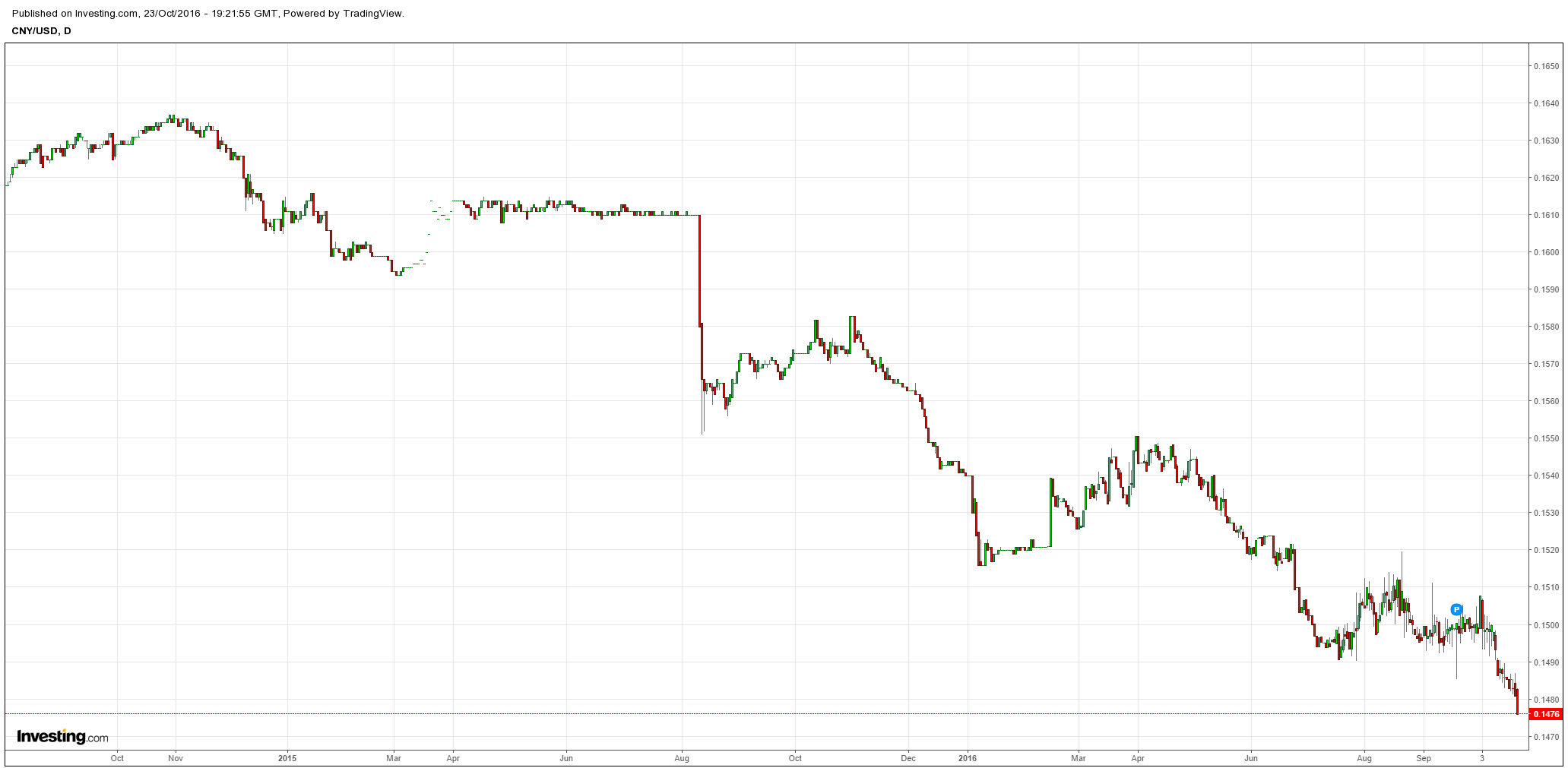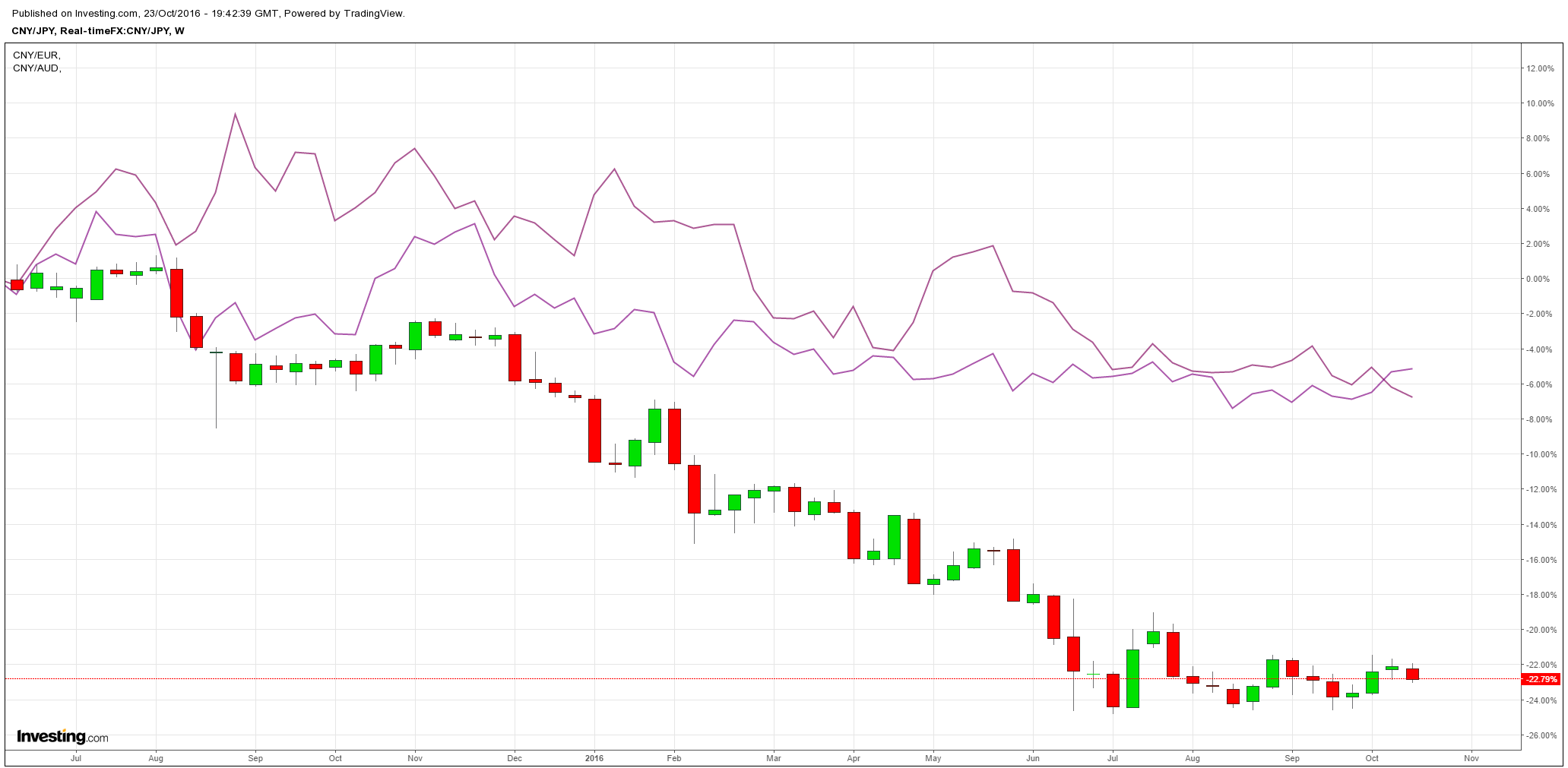Because it sure is plunging again against the US dollar:

Readers will recall that the falling yuan is one half of what MB described as the Mining GFC. The other half is the rising US dollar. Last year at this time the two combined to frighten the life out of markets as they threatened to crush emerging markets in a forex pincer:
- the rising US dollar sucks liquidity from EMs and forces rate hikes while hurting commodity prices and
- the falling yuan hammers EM competitiveness across primary and secondary exports into China.
Macquarie summed up dynamics in March this year:
In a nutshell, our way of observing the RMB is very simple: The strength of dollar leads the movement of USD/CNY, while the PBoC follows two principles: (1) If the dollar index strengthens, the RMB would depreciate against dollar along with other currencies; (2) If capital outflows are too high (say, close to $100bn a month), the PBoC would step up intervention to stabilize the currency and reduce capital outflows.
As such, we believe the dovish stance adopted by the Fed in the latest FOMC, and thereby a weak dollar, could help lower the depreciation pressure on the RMB and China’s capital outflows. This is a positive development of international policy coordination since the recent G20 meeting in Shanghai. Two scenarios are possible:
A positive one: Weak dollar -> stable RMB -> lower capital outflows from EM – > higher risk appetite globally -> weaker dollar. It’s a positive feedback loop, but it requires policy coordination between China and the US. China needs to be clear about no major devaluation, while the US needs to mind the strength of the dollar as the result of its policy moves.
And a negative one: Strong dollar -> weaker RMB -> higher capital outflows from EM -> lower risk appetite globally -> stronger dollar. It’s a negative feedback loop. In the end, it could force the Fed to postpone rate hikes, as rising market volatility and a strong dollar could hurt the recovery in the US.
And it did of course. What’s different this time? Well…maybe nothing! But to date markets have held up in the face of the same dynamics for a few reasons:
- the Chinese stimulus is one key reason. Earlier this year commodity markets were fundamentally very weak as well on market gluts. Today they are supported by the Chinese building boomlet;
- another key is oil prices. The OPEC non-deal has been enough to prevent the US dollar from crashing the oil price so US and global inflation is supported rather than destroyed by the USD/CNY forex dynamic;
- a third reason is that the yuan devaluation is less widespread in recent months. JPY, EUR (and the AUD) are not rising as much as last year against the CNY:

Even so, as we approach an expected Fed hike in December, the Chimerican deflationary trade is growing stronger again. Is it going to intensify? Yes:
- If the PBOC does not want the Fed to hike then all it has to do is keep devaluing. Given the difficulty it poses in managing Chinese capital outflows why would it want it to hike?
- The OPEC non-deal is just jawboning. As OPEC members flood the market, oil prices are going to come under renewed pressure to either boost the deal or reduce the shale rebound.
- Other commodity prices are at or near rally peaks. Coal prices will fame out soon as supply responds. Iron ore is going to roll with Chinese property. Copper is already close to break down.
Will it be enough to derail the Fed again? I think that the risk is higher than markets appreciate but if not then all of the same pressures will redouble once it hikes.

